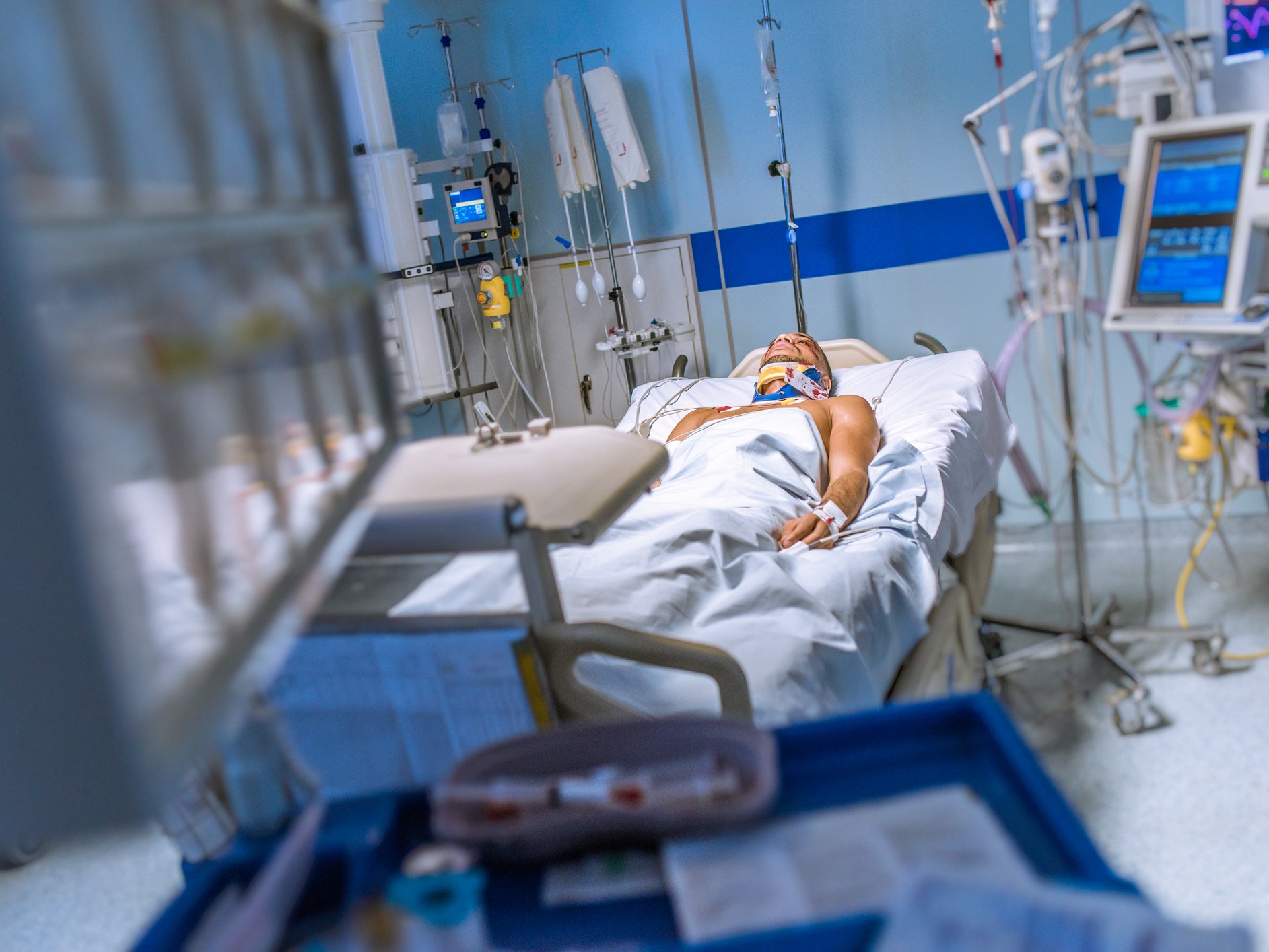Pressure on NHS intensive care at highest level since 2010 swine flu pandemic, senior doctors warn
Two-thirds of hospital trusts have experienced at least one day over the winter period with no capacity

Your support helps us to tell the story
From reproductive rights to climate change to Big Tech, The Independent is on the ground when the story is developing. Whether it's investigating the financials of Elon Musk's pro-Trump PAC or producing our latest documentary, 'The A Word', which shines a light on the American women fighting for reproductive rights, we know how important it is to parse out the facts from the messaging.
At such a critical moment in US history, we need reporters on the ground. Your donation allows us to keep sending journalists to speak to both sides of the story.
The Independent is trusted by Americans across the entire political spectrum. And unlike many other quality news outlets, we choose not to lock Americans out of our reporting and analysis with paywalls. We believe quality journalism should be available to everyone, paid for by those who can afford it.
Your support makes all the difference.Pressures in intensive care units are at their highest level since the 2010 swine flu pandemic,with wards regularly having no spare beds, senior doctors have warned.
Figures reported by the NHS this winter show that two-thirds of hospital trusts have experienced at least one day over the winter period with no beds at all.
Eleven trusts – which can include several hospitals in each – have had no intensive care beds for at least half of the days since 20 November.
While national average figures suggest occupancy is at 85 per cent, senior critical care doctors told The Independent the statistics do not tell the whole story and pressures are at their worst for eight years.
“The pressures in critical care are intense across the board,” said Dr Gary Masterson, president of the Intensive Care Society. “This is a bad winter, it’s the worst since 2010 when we had the H1N1 (swine flu) outbreak.”
While intensive care supports the sickest patients – those who have just finished surgery or who are suffering from multiple organ failure – its pressures are rooted in the crisis in the social care sector.
The lack of capacity to support patients at home when they are fit to leave hospital has a knock-on effect running the length of the NHS.
“If we could get our patients out we could function well,” said Dr Masterson, who is also a consultant in critical care medicine and anaesthesia at the Royal Liverpool University Hospital. “But it affects us because social care is so underfunded.”
Over winter, trusts must report their spare bed capacity on a daily basis, including for intensive care and English hospitals have been at 100 per cent on 1,137 occasions so far, roughly one day in seven this winter.
Trusts with fewer intensive care beds are more likely to report being at maximum capacity, and the national average figures for critical care bed occupancy show it sits slightly above 85 per cent.
This is better than the more widely reported figure for general and acute hospital beds, which have not dipped far below 95 per cent all winter, but the critical care figures hide significant variation.
“The national figures don’t always tell the truth, they give an overall percentage, but lots of individual units are running very, very busy at the moment,” said Dr Masterson.
The Independent’s analysis shows that 101 trusts out of 137 have reported maximum capacity on at least one day between 20 November and 14 January.
But Airedale NHS Foundation trust, which has six critical care beds, has been full on 48 out of 56 days, while Hillingdon Hospitals NHS foundation Trust, which has nine critical care beds, has been full on 43 occasions.
Larger trusts are also reporting exceptionally high occupancy, often just shy of 100 per cent.
The 120 bed Barts Health NHS Trust has hit 98 per cent occupancy – leaving them with just two beds for incoming patients – and is regularly above 90 per cent.
While intensive care units are used to operating at high capacity the Intensive Care Society said staff increasingly have to treat patients away from the ICU, sometimes using portable ventilators if there is no dedicated critical care setup.
“We deliver critical care wherever it needs to be delivered, it’s not as good as being in the intensive care unit but it’s better than nothing,” Dr Masterson said.
Trusts also share bed space if there’s not capacity, however this relies on the patient being stable enough to move and the relevant transport being available.
Respiratory illnesses account for the majority of patients in intensive care. In the first week of 2018 the number of patients requiring intensive care after having flu spiked 65 per cent.
But it hasn’t been alone in putting pressure on the NHS, other respiratory infections are also causing serious complications.
Meanwhile, a growth in intensive care beds, which bucked the trend of the wider NHS, has stalled in recent years.
The Intensive Care Society also said workforce pressures are a factor, with exceptional pressures leading to high rates of staff sickness and burnout.
An NHS England spokesperson said: “It is simply not true that intensive care units are full. Hospitals themselves are reporting there are critical beds available and they say bed occupancy is around 80-95% which is no different to other years at this time. These pressures have been intensified by raised levels of flu - so far this winter there have been 952 ICU flu patient admissions alone.”
Join our commenting forum
Join thought-provoking conversations, follow other Independent readers and see their replies
Comments